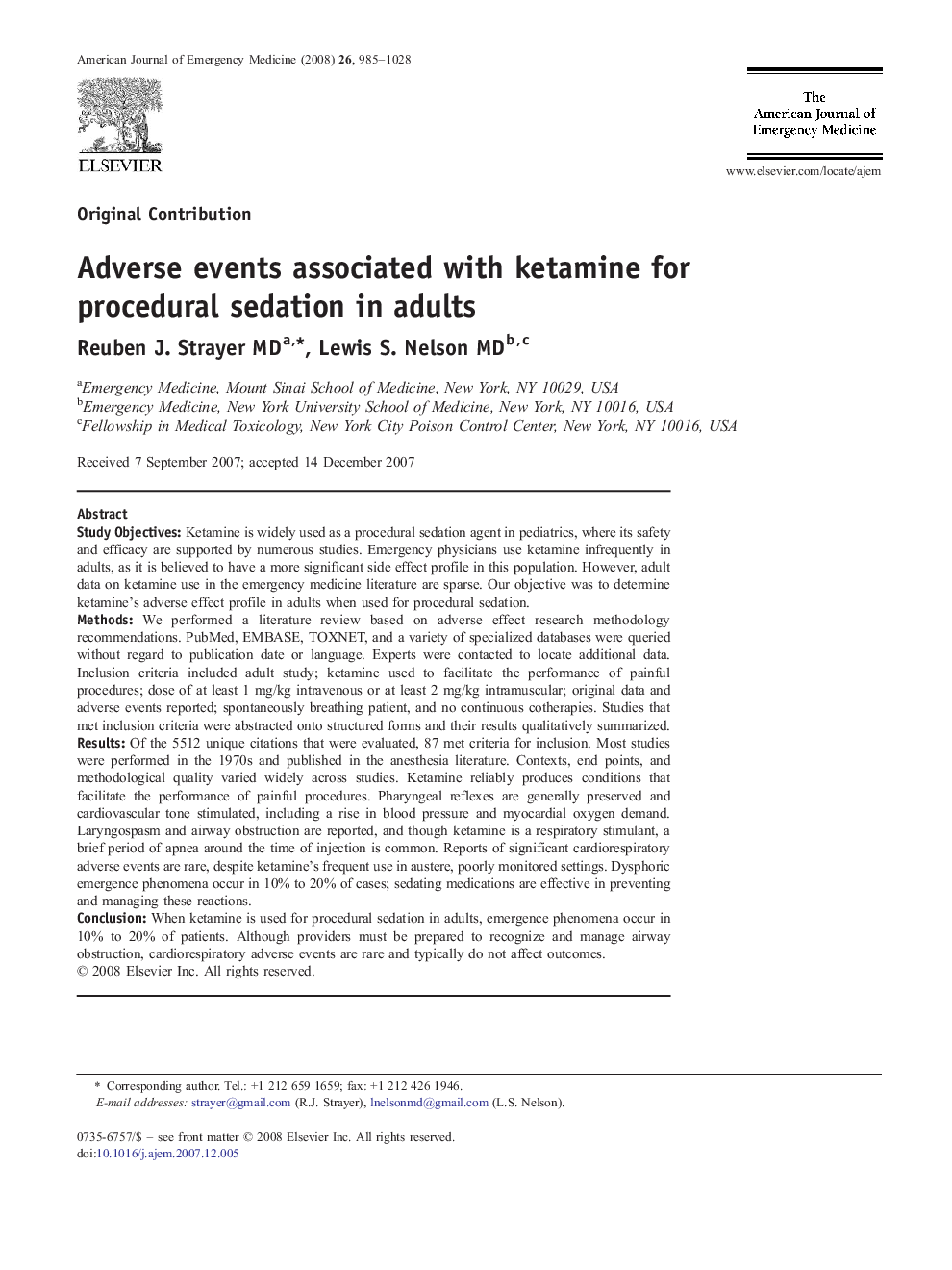| کد مقاله | کد نشریه | سال انتشار | مقاله انگلیسی | نسخه تمام متن |
|---|---|---|---|---|
| 3226539 | 1588171 | 2008 | 44 صفحه PDF | دانلود رایگان |

Study ObjectivesKetamine is widely used as a procedural sedation agent in pediatrics, where its safety and efficacy are supported by numerous studies. Emergency physicians use ketamine infrequently in adults, as it is believed to have a more significant side effect profile in this population. However, adult data on ketamine use in the emergency medicine literature are sparse. Our objective was to determine ketamine's adverse effect profile in adults when used for procedural sedation.MethodsWe performed a literature review based on adverse effect research methodology recommendations. PubMed, EMBASE, TOXNET, and a variety of specialized databases were queried without regard to publication date or language. Experts were contacted to locate additional data.Inclusion criteria included adult study; ketamine used to facilitate the performance of painful procedures; dose of at least 1 mg/kg intravenous or at least 2 mg/kg intramuscular; original data and adverse events reported; spontaneously breathing patient, and no continuous cotherapies. Studies that met inclusion criteria were abstracted onto structured forms and their results qualitatively summarized.ResultsOf the 5512 unique citations that were evaluated, 87 met criteria for inclusion. Most studies were performed in the 1970s and published in the anesthesia literature. Contexts, end points, and methodological quality varied widely across studies. Ketamine reliably produces conditions that facilitate the performance of painful procedures. Pharyngeal reflexes are generally preserved and cardiovascular tone stimulated, including a rise in blood pressure and myocardial oxygen demand. Laryngospasm and airway obstruction are reported, and though ketamine is a respiratory stimulant, a brief period of apnea around the time of injection is common. Reports of significant cardiorespiratory adverse events are rare, despite ketamine's frequent use in austere, poorly monitored settings. Dysphoric emergence phenomena occur in 10% to 20% of cases; sedating medications are effective in preventing and managing these reactions.ConclusionWhen ketamine is used for procedural sedation in adults, emergence phenomena occur in 10% to 20% of patients. Although providers must be prepared to recognize and manage airway obstruction, cardiorespiratory adverse events are rare and typically do not affect outcomes.
Journal: The American Journal of Emergency Medicine - Volume 26, Issue 9, November 2008, Pages 985–1028